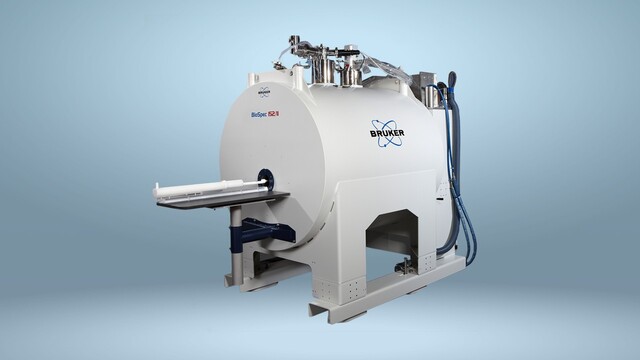MIND Technology Platform
Revolutionary integration of ultra-high field MRI and lightsheet microscopy
Meso-scale Whole Brain Imaging
Bridging the gap between macro and micro scales
The MIND Platform pioneers a revolutionary meso-scale approach to brain imaging by seamlessly combining ultra-high field MRI with lightsheet microscopy. This integration enables unprecedented multi-scale analysis of brain structure and function.
Key Advantages:
- Spatial bridging: From millimeter-scale MRI to micrometer-scale microscopy
- Functional correlation: Links macro-scale connectivity with cellular pathology
- Comprehensive mapping: Whole-brain coverage with cellular resolution
- Translational potential: From preclinical models to human applications
This approach allows researchers to observe how microscopic cellular changes relate to large-scale brain network alterations, providing crucial insights into neurodegenerative diseases like Alzheimer's and Parkinson's.
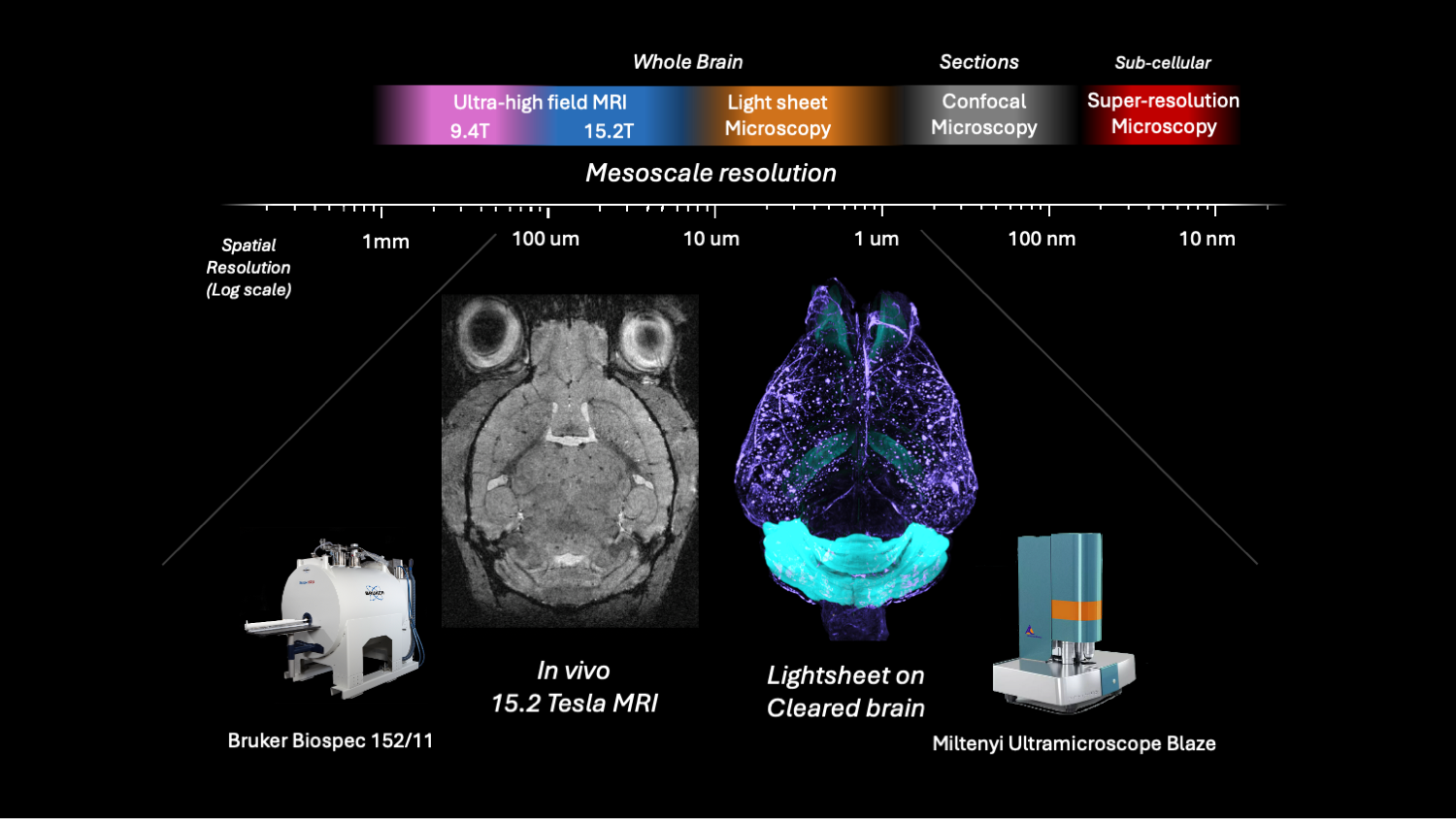
Integration of MRI (macro-scale) and lightsheet microscopy (micro-scale) for comprehensive brain analysis
Ultra-High Field MRI Enhancement
15.2T vs 9.4T: A quantum leap in imaging capability
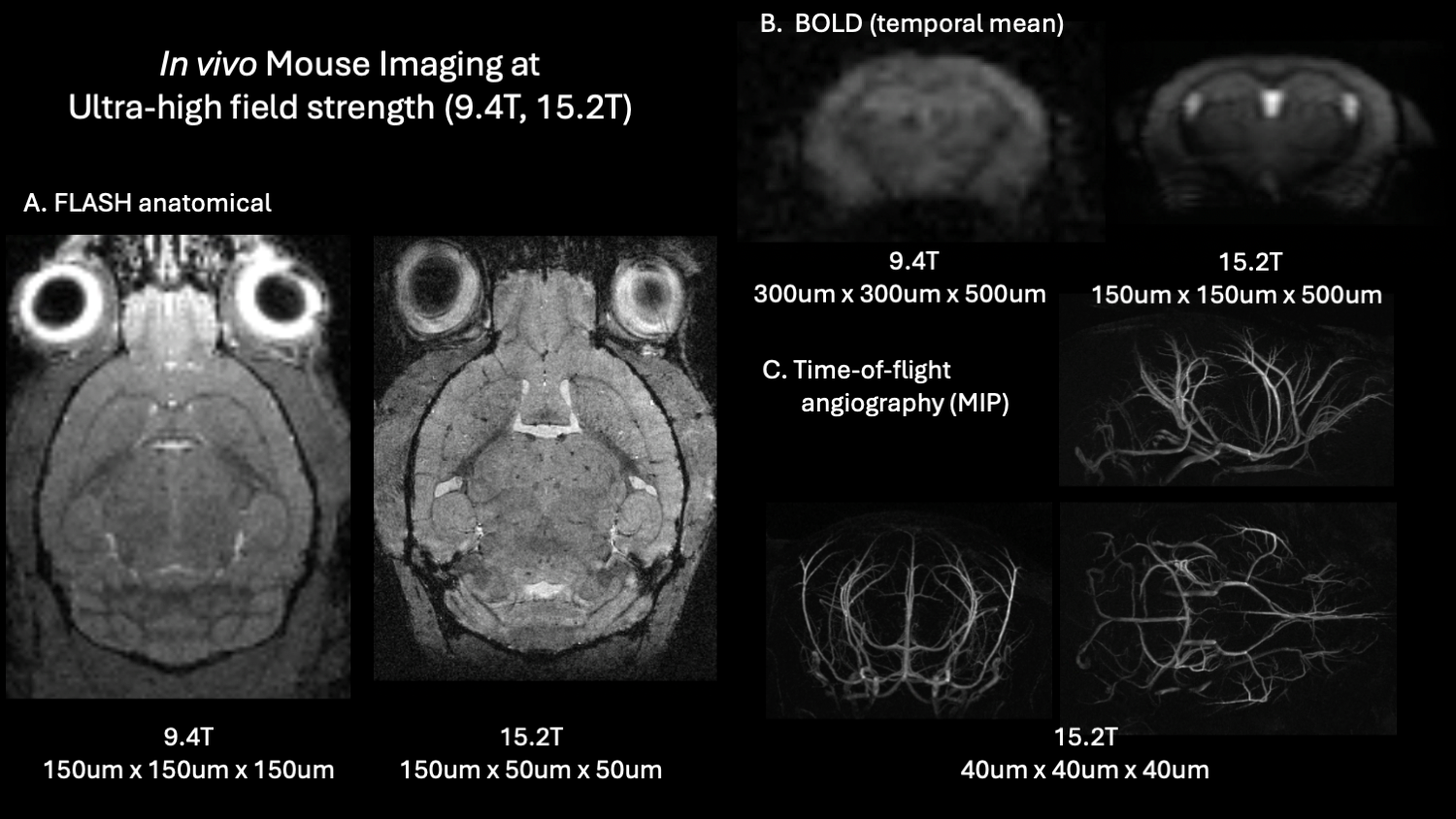
Enhanced resolution and contrast at 15.2T enables detection of subtle brain changes
The transition from 9.4T to 15.2T MRI represents a transformative advancement in neuroimaging capability, providing unprecedented spatial resolution and contrast sensitivity.
15.2T Advantages:
- Enhanced SNR: 60% improvement in signal-to-noise ratio
- Superior resolution: Sub-100μm spatial resolution achievable
- Improved contrast: Better tissue differentiation and pathology detection
- Functional sensitivity: Increased BOLD sensitivity for resting-state fMRI
- Microstructural mapping: Advanced diffusion imaging capabilities
This enhanced capability is crucial for detecting early-stage pathological changes and understanding subtle brain connectivity patterns that were previously invisible at lower field strengths.
Advanced Processing Pipelines
Automated quantification of lightsheet microscopy data
Our sophisticated processing and analysis pipelines transform raw lightsheet microscopy data into quantitative insights through automated registration, segmentation, and statistical analysis.
Pipeline Components:
- Automated registration: Deformable alignment to standardized brain atlases
- Tissue clearing correction: Compensation for optical artifacts and distortions
- Multi-channel analysis: Simultaneous processing of multiple fluorescent markers
- Pathology quantification: Automated detection and measurement of disease markers
- Statistical mapping: Population-level analysis and group comparisons
These pipelines, implemented using tools like SPIMquant and zarrnii, enable high-throughput analysis of large datasets while maintaining reproducibility and accuracy across studies.
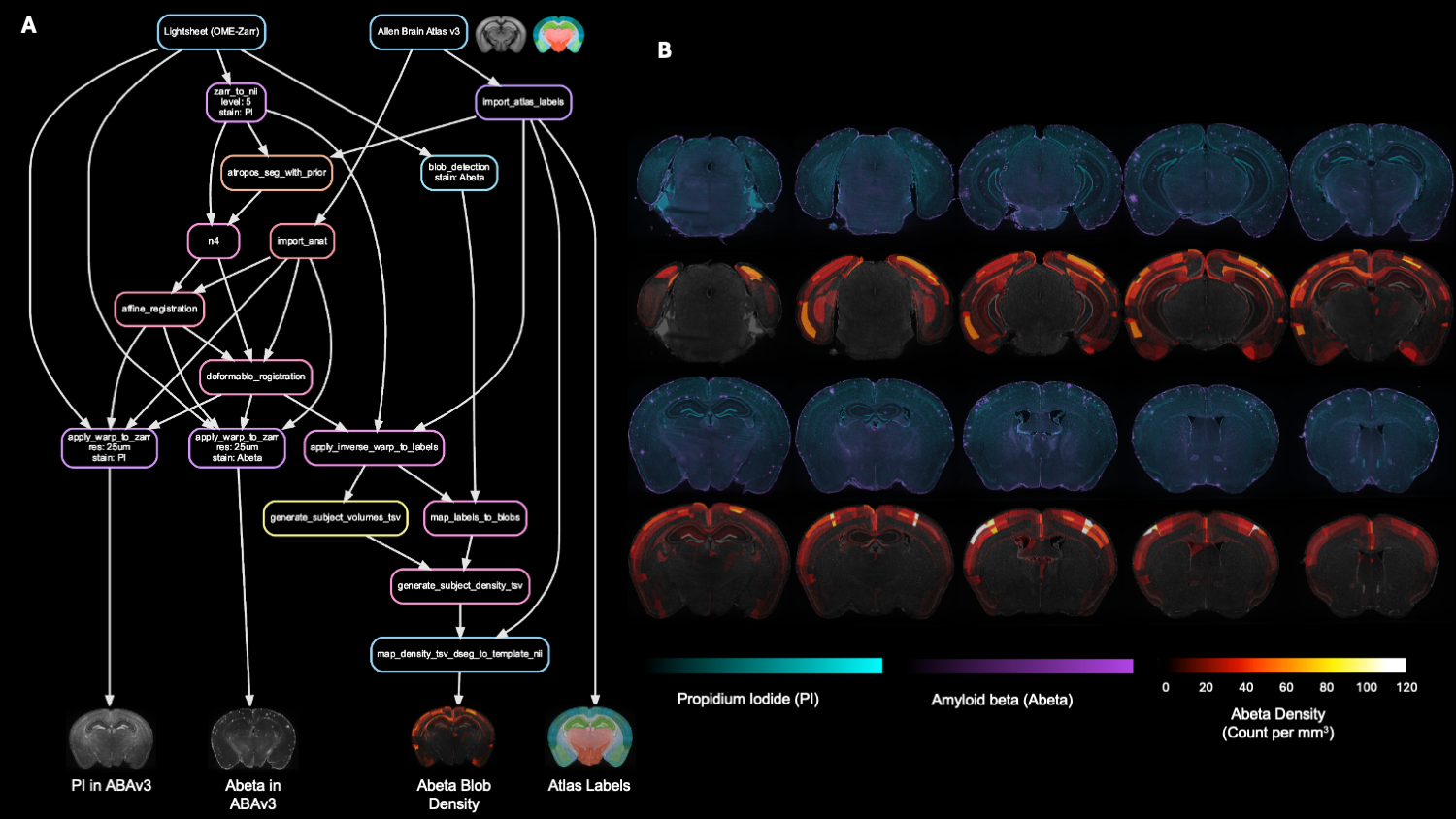
Automated pipeline from raw lightsheet data to quantitative pathology maps
Patho-connectomics Integration
Linking functional connectivity with molecular pathology
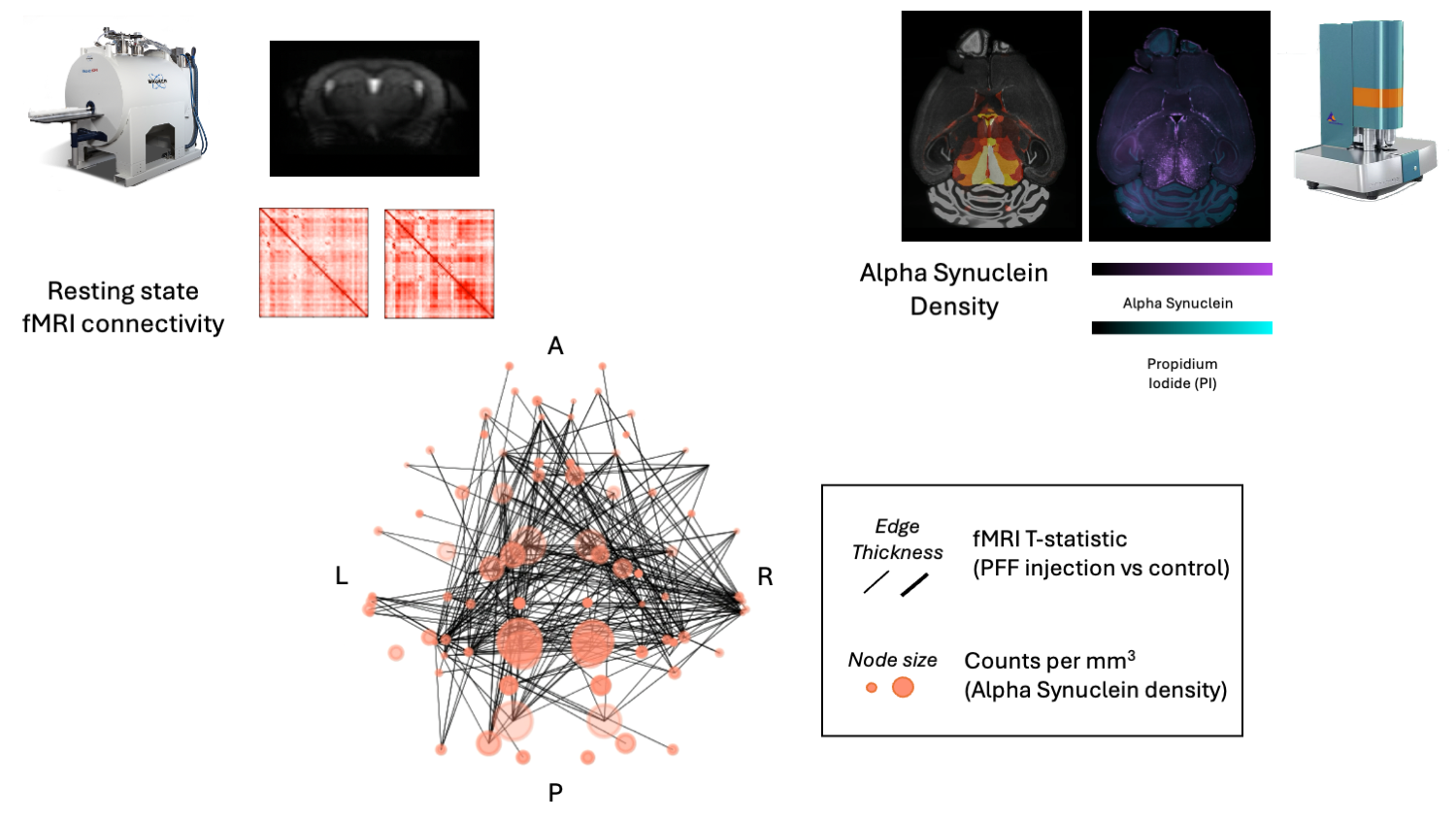
Integration of resting-state fMRI networks with alpha-synuclein pathology mapping
Our innovative "patho-connectomics" approach combines resting-state functional MRI (rs-fMRI) with quantitative lightsheet microscopy to reveal how molecular pathology disrupts brain network connectivity.
Methodological Innovation:
- Functional mapping: rs-fMRI reveals brain network connectivity patterns
- Pathology localization: Lightsheet microscopy quantifies alpha-synuclein deposits
- Spatial correlation: Direct linking of connectivity changes to pathology burden
- Network vulnerability: Identification of pathology-sensitive brain circuits
- Disease progression: Tracking how pathology spreads through connected regions
This approach provides unprecedented insights into how molecular pathology in neurodegenerative diseases translates into functional brain network disruptions, enabling earlier detection and targeted therapeutic interventions.
Core Equipment
State-of-the-art instrumentation driving breakthrough discoveries

Miltenyi Blaze Ultramicroscope 2
Advanced lightsheet microscopy system featuring dual-side illumination, multi-channel fluorescence detection, and automated sample handling for high-throughput whole-brain imaging.
Collaborate with MIND
Join our mission to advance brain research
The MIND Platform offers unprecedented opportunities for collaborative research in neuroscience, neurodegenerative diseases, and computational neuroimaging. Our open science approach ensures broad accessibility to cutting-edge technology and expertise.
Research areas include: Alzheimer's disease, Parkinson's disease, brain connectivity analysis, pathology quantification, multi-scale imaging, and computational neuroscience.

